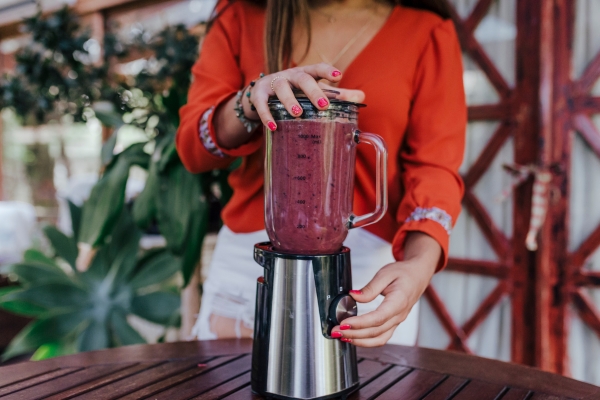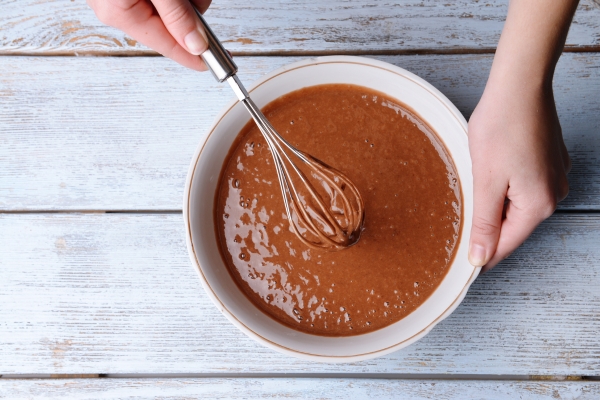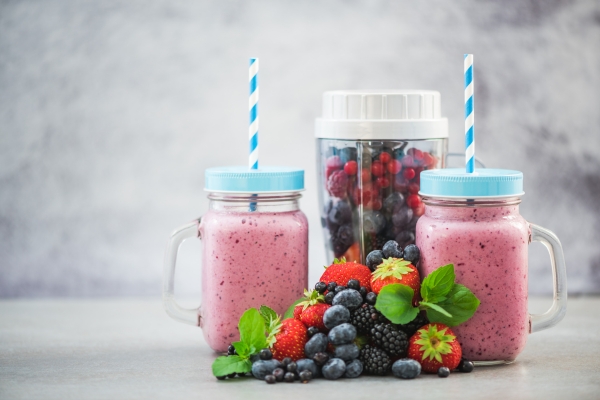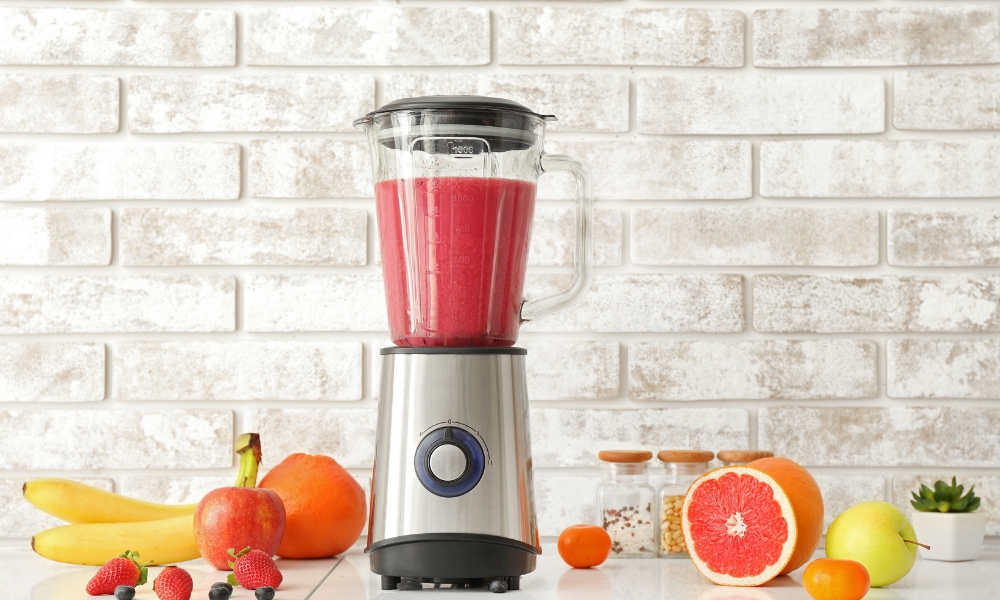Blending without a blender might seem challenging, but it’s entirely possible with a few simple techniques. Whether you’re camping, your blender is broken, or you simply prefer a low-tech approach, learning how to blend without a blender can be incredibly useful. This method involves using common kitchen tools like a whisk, fork, or even a mortar and pestle to achieve the desired consistency. By understanding these alternative blending techniques, you can still create delicious smoothies, soups, and sauces without the need for electric appliances. This guide will walk you through the steps to effectively blend without a blender, ensuring you can enjoy your favorite recipes anytime, anywhere.
Why You Might Need to Blend Without a Blender?
Blending without a blender might become necessary in various situations, whether you’re traveling, experiencing a power outage, or your blender simply isn’t available. In such cases, knowing alternative methods can save the day. For instance, if you’re camping or on a road trip, portable kitchen tools can be a great substitute for blending your favorite foods. Additionally, learning to blend without a blender can be a valuable skill for those who prefer a minimalist kitchen setup. This approach not only fosters creativity in the kitchen but also ensures that you can prepare nutritious meals regardless of the circumstances.
Can I Make Baby Food Without a Blender?
Yes, you can definitely make baby food without a blender. By using simple tools like a fork, potato masher, or even a fine grater, you can achieve the smooth consistency required for baby food. Steaming vegetables and fruits until they are very soft is a key step, as this makes them easier to mash thoroughly. For an even finer texture, you can pass the mashed food through a sieve. This method is not only effective but also ensures that your baby enjoys fresh, homemade food free from preservatives and additives. Understanding how to blend without a blender is especially useful for parents who want to provide wholesome, nutritious meals for their little ones, even when modern kitchen appliances are not at hand.
Essential Tools For Manual Blending
Basic Kitchen Tools
- Forks And Spoons
- Potato Masher
- Whisk
Specialty Tools
- Mortar And Pestle
- Food Mill
- Hand Mixer
Techniques For Blending Without A Blender

Mashing
- Vegetables
For blending vegetables without a blender, consider steaming or boiling them until they are soft enough to mash or puree. Once cooked, you can use a fork, potato masher, or even a food mill to break down the vegetables into a smooth consistency. This technique is perfect for making soups, sauces, or vegetable purees without the need for a blender.
- Fruits
Similarly, blending fruits without a blender can be achieved by using manual tools like a fork or potato masher. Start by peeling and chopping the fruits into small pieces, then mash them thoroughly until they form a smooth puree. You can also use a mortar and pestle to crush fruits into a finer consistency. This method is ideal for making fruit sauces, spreads, or even smoothies when a blender is not available.
Whisking

- Soups
For soups, blending without a Use Ninja Blender can be achieved by using a potato masher or a fork to break down cooked vegetables and other ingredients. Once the ingredients are softened through cooking, gently mash them until they form a thick, creamy texture. Alternatively, you can pass the soup through a fine sieve or mesh strainer to remove any chunks and create a smooth consistency. This technique allows you to enjoy homemade soups without the need for a blender, perfect for rustic-style dishes like chunky vegetable soups or hearty stews.
- Sauces
Blending sauces without a blender can be accomplished by using a whisk or a wooden spoon to combine the ingredients thoroughly. Whether it’s a creamy béchamel sauce or a tangy tomato sauce, whisking ensures that the components are evenly incorporated and the sauce achieves a smooth texture. Additionally, reducing the sauce over low heat can help thicken it and enhance the flavors. This method allows you to create flavorful sauces from scratch, even when a blender is not available, perfect for pasta dishes, meat glazes, or dipping sauces.
Grinding And Pounding

- Herbs and Spices
Blending herbs and spices without a blender involves grinding them using a mortar and pestle or a spice grinder. Start by selecting fresh herbs or whole spices and gently crushing them to release their essential oils. This technique intensifies the flavors and aromas, enhancing the taste of your dishes. Whether you’re making curry powder, garam masala, or herbed seasoning blends, grinding herbs and spices manually ensures superior quality and customization.
- Nuts and Seeds
Blending nuts and seeds without a blender can be achieved by grinding them using a mortar and pestle or a nut grinder. Start by roasting the nuts to enhance their flavor, then crush them into a coarse or fine texture, depending on your preference. This technique is perfect for making homemade nut flours, nut butters, or crunchy toppings for salads and desserts. Grinding nuts and seeds manually allows you to control the texture and consistency, resulting in delicious and nutritious blends.
Chopping And Mixing
- Salads
Blending salads without a blender involves chopping and mixing fresh ingredients to create a harmonious blend of flavors and textures. Choose a variety of vegetables, fruits, greens, and proteins to build a nutritious and satisfying salad. Incorporate crunchy elements like nuts or seeds for added texture, and dress the salad with a homemade vinaigrette or creamy dressing. By mastering the art of chopping and mixing, you can create vibrant salads bursting with color and flavor, perfect for any occasion.
- Dips and Salsas
Blending dips and salsas without a blender requires chopping and blend mixing ingredients to achieve the desired consistency and flavor profile. For example, to make guacamole, finely chop ripe avocados, onions, tomatoes, and cilantro, then mix them together with lime juice and seasonings until well combined. Similarly, for salsa, chop tomatoes, onions, jalapeños, and cilantro, then mix them with lime juice and spices to create a zesty condiment. These homemade dips and salsas offer fresh flavors and customizable textures, making them a delicious addition to any meal or snack.
Manual Blending Recipes

Smoothies
- Using Fork And Spoon
Ingredients:
- 1 ripe banana
- 1/2 cup frozen berries
- 1/2 cup yogurt
- 1/2 cup milk or dairy-free alternative
- 1 tablespoon honey or maple syrup (optional)
Instructions:
- Peel the banana and place it in a bowl.
- Use a fork to mash the banana until it becomes smooth.
- Add the frozen berries, yogurt, and milk to the mashed banana.
- Stir the mixture vigorously with a spoon until well combined and smooth.
- Taste and adjust sweetness with honey or maple syrup if desired.
- Serve immediately and enjoy your refreshing fork-and-spoon smoothie
Soups And Sauces
- Mashing And Whisking Techniques
Ingredients for Tomato Soup:
- 4 large tomatoes, diced
- 1 onion, chopped
- 2 cloves garlic, minced
- 2 cups vegetable broth
- Salt and pepper to taste
- Fresh basil leaves for garnish (optional)
Instructions:
- In a pot, sauté the chopped onion and minced garlic until softened.
- Add the diced tomatoes and vegetable broth to the pot.
- Bring the mixture to a simmer and let it cook for 15-20 minutes until the tomatoes are soft.
- Use a potato masher or fork to mash the cooked tomatoes until smooth.
- Season the soup with salt and pepper to taste.
- Serve hot, garnished with fresh basil leaves if desired.
Homemade Nut Butters
- Grinding With Mortar And Pestle
Instructions:
- Place the raw almonds in a mortar.
- Use the pestle to grind the almonds in a circular motion until they release their oils and form a smooth paste.
- Continue grinding until the almond butter reaches your desired consistency.
- Transfer the homemade almond butter to a jar and store it in the refrigerator for up to two weeks.
- Use as a spread on toast, in smoothies, or as a dip for fruits and vegetables.
Advantages of Manual Blending
Manual blending offers several advantages that make it a worthwhile alternative to using a blender:
- Portability: Manual blending techniques require minimal equipment, making them ideal for use while traveling, camping, or in situations where a blender is not available.
- Control: With manual blending, you have complete control over the texture and consistency of your dishes. Whether you prefer chunky soups or smooth sauces, you can tailor the blending process to suit your preferences.
- Creativity: Manual blending encourages creativity in the kitchen. By experimenting with different techniques like mashing, whisking, and grinding, you can create unique flavor combinations and culinary creations.
- Ease of Cleanup: Unlike blenders, which can have multiple parts to clean, manual blending often involves using simple utensils like forks, spoons, or mortars and pestles, making cleanup quick and easy.
Is Manual Blending Healthier?
While manual blending may not offer the same level of speed and convenience as using a blender, it can still be a healthy option for preparing meals and snacks. Manual blending techniques like mashing, chopping, and whisking allow you to incorporate whole, fresh ingredients into your dishes, preserving their nutritional value. Additionally, manual blending gives you control over the amount of added sugars, salts, and fats in your recipes, allowing you to make healthier choices. However, it’s important to note that the healthiness of your meals ultimately depends on the ingredients you choose and how you prepare them, rather than the method of blending.
Conclusion
Manual blending techniques offer a convenient and versatile way to prepare a wide range of dishes without the need for a blender. From smoothies and soups to sauces and nut butters, manual blending allows you to get creative in the kitchen while maintaining control over the texture and flavor of your recipes. While it may not always be as fast or efficient as using a blender, manual blending offers unique advantages such as portability, control, and ease of cleanup. Whether you’re looking to simplify your cooking routine, experiment with new flavors, or enjoy homemade meals on the go, manual blending is a valuable skill to have in your culinary repertoire.
